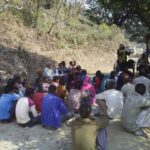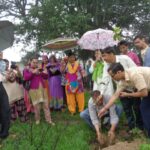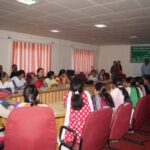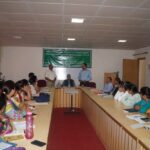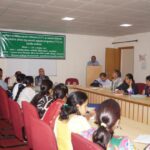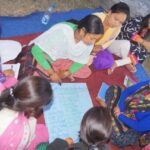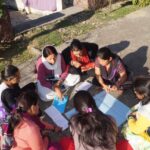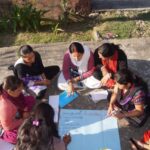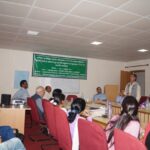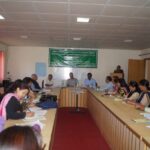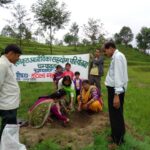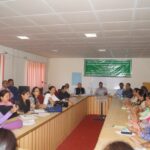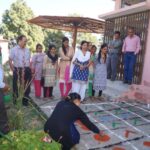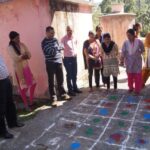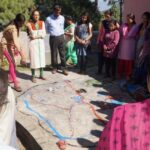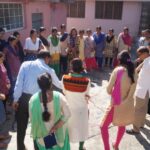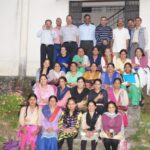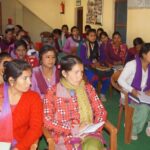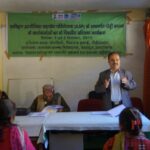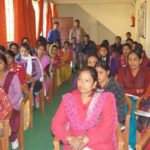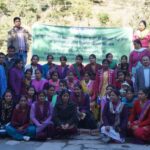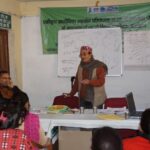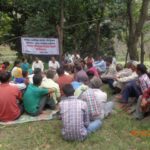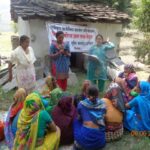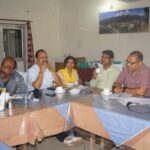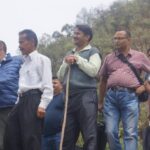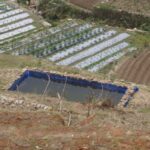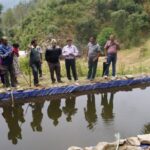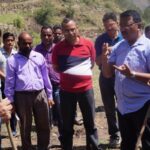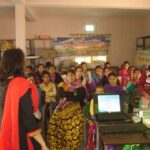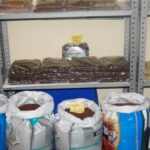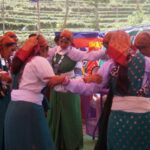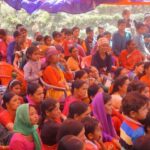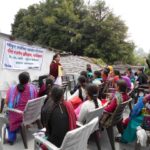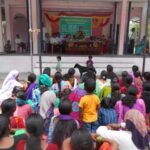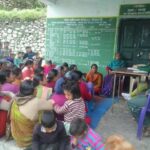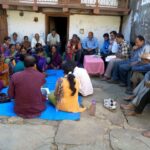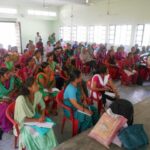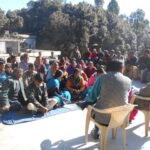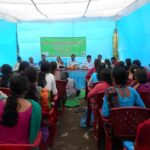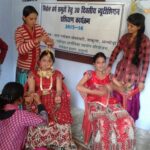INTEGRATED LIVELIHOOD SUPPORT PROJECT (ILSP)
SOCIAL MOBILIZATION SERVICES FOR FACILITATING IMPLEMENTATION OF ACTIVITIES BY COMMUNITIES FOR PARTICIPATORY WATERSHED DEVELOPMENT UNDER INTEGRATED LIVELIHOOD SUPPORT PROJECT (ILSP), UTTARAKHAND WATERSHED DEVELOPMENT UNIT (UWDU)
INTRODUCTION AND BACKGROUND OF THE PROJECT
The state of Uttarakhand, located in the north-west of India, covers an area of 54,483 km2 and has a population of around 8.5 million as per the 2001 census. The majority of its population resides in the plains, while nine out of thirteen districts are classified as hilly districts, covering 77% of the state’s area but with only 44% of the population. To provide income-generating activities for the sustenance of inhabitants in hilly areas, the Government of Uttarakhand has launched the Integrated Livelihood Support Project (ILSP), implemented by the Watershed Management Directorate (WMD). The primary objective of ILSP is to improve the productive potential of natural resources and enhance rural incomes through socially inclusive and institutionally and environmentally sustainable approaches. The project aims to contribute to the improvement of the general living conditions and quality of life of the hilly rural poor population and enable rural households to take up sustainable livelihood opportunities integrated with the wider economy in the project region with a special focus on the poorest villages.
The project consists of various components and activities such as survey, data collection, and identification of beneficiaries, integrated participatory watershed management, community mobilization and awareness building through Participatory Rural Appraisal (PRA) tools, local institution building, capacity building of local institutions in communication skills, gender issues, and sustainability, micro-credits, micro-enterprise development and bank linkages, networking and market linkages, preparation and designing of livelihood improvement, food security and agribusiness up-scaling plan, and participatory monitoring and evaluation, social audit, and environmental monitoring of the program’s progress. Despite the disadvantages that agriculture faces in the hilly areas, Uttarakhand has the advantage of cooler temperatures at higher altitudes, allowing the production of out of season vegetables and temperate fruits. The horticultural sector is less developed than in the other hill states, providing considerable potential for growth, along with other niche products such as spices, medicinal and aromatic plants, and nuts. Moreover, tourism is another area with growth potential. However, more efforts need to be done to ensure that local people fully participate in and benefit from this sector. The population is well educated, but the level of youth unemployment is relatively high. Hence, better vocational training could help such people find good quality employment in the growth sectors of the country.
AIMS AND OBJECTIVES OF THE PROJECT
1. Enhance the productive potential of natural resources and increase rural incomes through sustainable and inclusive approaches.
2. Contribute to improving living conditions and the quality of life for the rural poor in hilly areas.
3. Enable rural households to engage in sustainable livelihood opportunities integrated with the broader economy, with a focus on the poorest villages.
4. Develop a participatory approach for livelihood support, along with the conservation and regeneration of local natural resources, involving Participatory Groups (PGs) and Village Participatory Groups (VPGs) in the Gram Panchayats of three project districts.
5. Identify and support PGs and vulnerable groups within VPGs in the Gram Panchayats of three project districts.
6. Enhance access to and sustainable utilization of social and economic infrastructure in the project region across the three districts.
7. Generate increased employment and income opportunities, particularly for the economically disadvantaged, while strengthening local civil society and enhancing community participation in decision-making processes.
8. Build capacities and establish networks for local institutions to develop institutional mechanisms within the Gram Panchayats of the three project districts.
9. Formulate plans for improving livelihoods, food security, and agribusiness upscaling. Develop strategies for microcredit, micro-enterprise development, and establishing bank linkages in the Gram Panchayats across the three districts.
10. Implement comprehensive monitoring and evaluation procedures, including social audits and environmental monitoring, to track program progress.
COMPONENTS AND ACTIVITIES OF THE PROJECT
1. Enhance rural incomes and maximize the productive potential of natural resources through the application of sustainable and inclusive strategies.
2. Contribute to the amelioration of living conditions and the enhancement of quality of life among the rural impoverished population in hilly regions.
3. Facilitate rural households in accessing sustainable livelihood opportunities integrated with the broader economy, with a special emphasis on the most underprivileged villages.
4. Foster a participatory approach for livelihood reinforcement, encompassing the preservation and revival of local natural resources. This engagement will involve the collaboration of Participatory Groups (PGs) and Village Participatory Groups (VPGs) in the Gram Panchayats situated across three project districts.
5. Identify and provide support to Participatory Groups (PGs) and vulnerable segments within Village Participatory Groups (VPGs) within the Gram Panchayats of the designated three project districts.
6. Enhance accessibility to, and the sustainable utilization of, both social and economic infrastructure throughout the project region, spanning across the three targeted districts.
7. Propel an increase in employment and income prospects, particularly for the socioeconomically challenged, while concurrently reinforcing local civil society structures and amplifying community involvement in the decision-making processes.
8. Cultivate capacities and foster networks for local institutions, thereby nurturing the establishment of institutional mechanisms within the Gram Panchayats of the specified three project districts.
9. Develop comprehensive strategies for the improvement of livelihoods, bolstering food security, and expanding agribusiness initiatives. This encompasses the formulation of strategies for microcredit, the cultivation of micro-enterprises, and the establishment of crucial bank linkages within the Gram Panchayats across the three districts.
10. Enact a meticulous implementation of comprehensive monitoring and evaluation protocols, including the execution of social audits and environmental monitoring activities. These mechanisms will play a pivotal role in systematically tracking the program’s progression and impact.
TARGET AREA OF THE PROJECT
The project is concentrated on distinct regions within Uttarakhand, specifically the Pabo and Ekeshwar blocks in Pauri Garhwal district, Betalghat and Ramgarh blocks in Nainital district, and Champawat, Pati, and Barakot blocks in Champawat district.
TARGET GROUPS AND BENEFICIARIES OF THE PROJECT
The project’s beneficiaries encompass the entire community residing in the designated villages within the project blocks and districts of Uttarakhand.
FUNDING PARTNER OF THE PROJECT
The funding for the project was provided by the Watershed Management Directorate (WMD), Department of Watershed Management, Government of Uttarakhand, Dehradun. The WMD, in turn, received financing from the International Fund for Agricultural Development (IFAD).
SANCTIONED BUDGET OF THE PROJECT
The Watershed Management Directorate (WMD) sanctioned the budget for the project in the year 2015, through a sanction order with reference number 2054/11-7 (ILSP) dated 02.02.2015. The total budget sanctioned by WMD for the project was Rs. 7,94,72,200.00, covering a four-year duration.
OUTCOMES AND ACHIEVEMENTS OF THE PROJECT
The outcomes and achievements of The Integrated Livelihood Support Project after its successful implementation in accordance with its objectives and components are as follows:
1. Survey, data collection, and beneficiary identification have been conducted, and integrated participatory watershed management, the use of PRA tools, awareness building, and community mobilization have been implemented.
2. Local institution building and capacity building of these institutions have been conducted, along with communication skills training, gender issues, and the sustainability of these institutions.
3. The project has enhanced the productive potential of natural resources and improved rural incomes through socially inclusive, institutionally sustainable, and environmentally friendly approaches.
4. Improved living conditions and quality of life of the hilly rural poor population have been achieved, enabling them to take up sustainable livelihood opportunities integrated with the wider economy in the project region, with a special focus on the poorest villages.
5. A participatory approach for livelihood support activities and the conservation and regeneration of local natural resources with PGs, VPGs, and Gram Panchayat of three project districts have been developed.
6. Vulnerable groups in the Gram Panchayat of the project districts have been identified and facilitated, and increased access to and sustainable utilization of social and economic infrastructure by the population of the project region have been ensured.
7. Increased employment and income opportunities, especially for the poor, have been created, and the local civil society has been strengthened, enhancing the population’s participation in the decision-making process.
8. Capacity building and networking of local institutions for developing institutional mechanisms in Gram Panchayats in these three districts have been strengthened.
9. Livelihood improvement, food security, and agribusiness up-scaling plans for Micro-credit, Micro-enterprise development, and bank linkages of the Gram Panchayat in these three districts have been prepared and designed.
10. Micro-credits, micro-enterprise development, and bank linkages have been provided to beneficiaries to improve their livelihoods.
11. Networking and market linkages have been established to connect producers with potential buyers.
12. Participatory monitoring and evaluation, social audit, and environmental monitoring have been emphasized to ensure the progress of the program.


